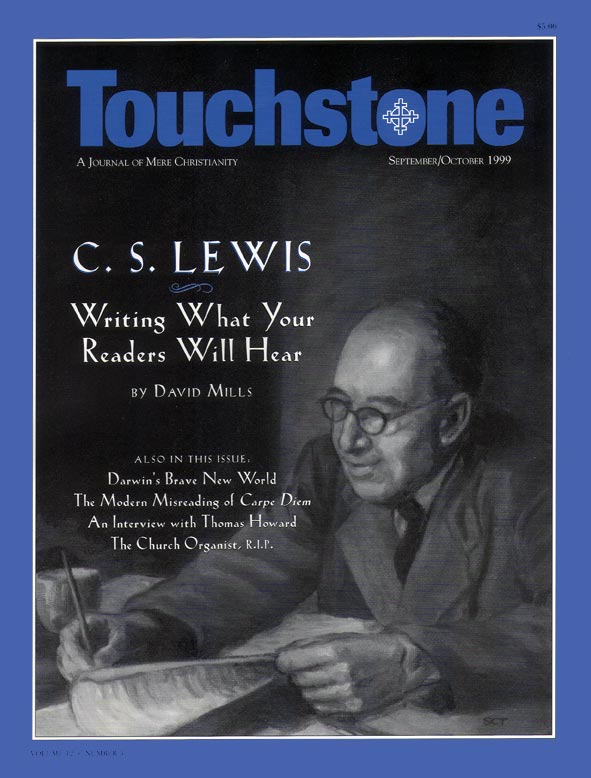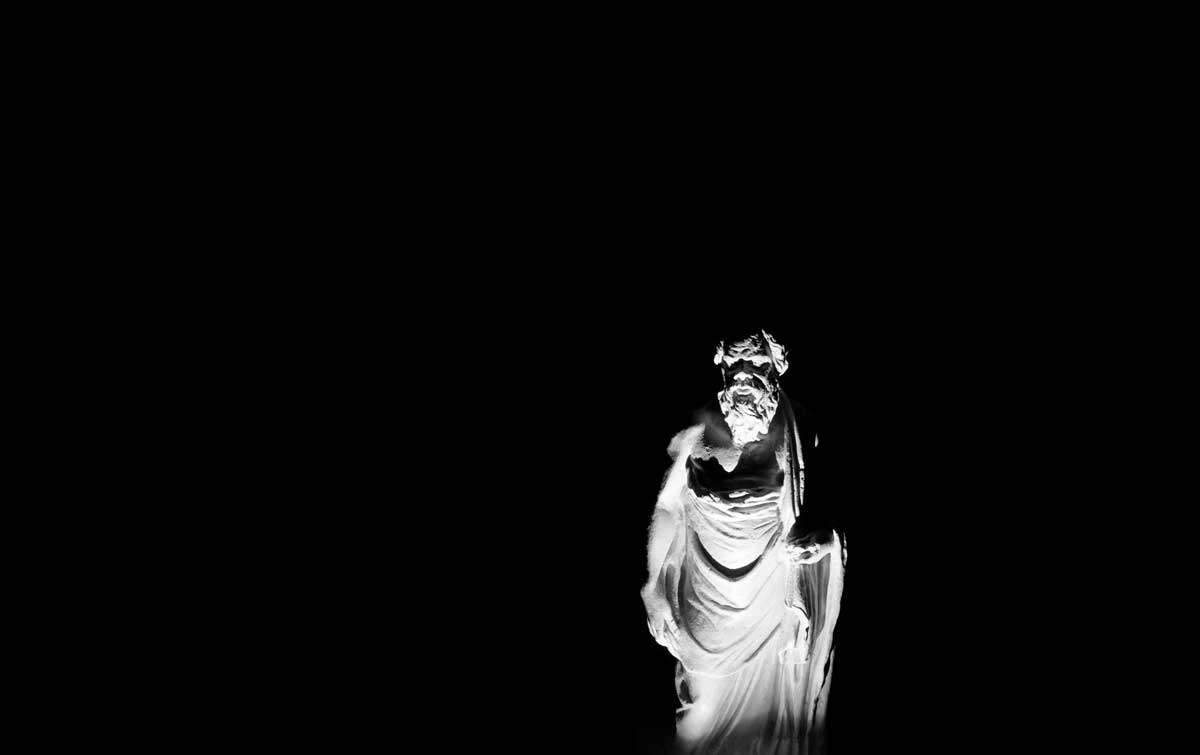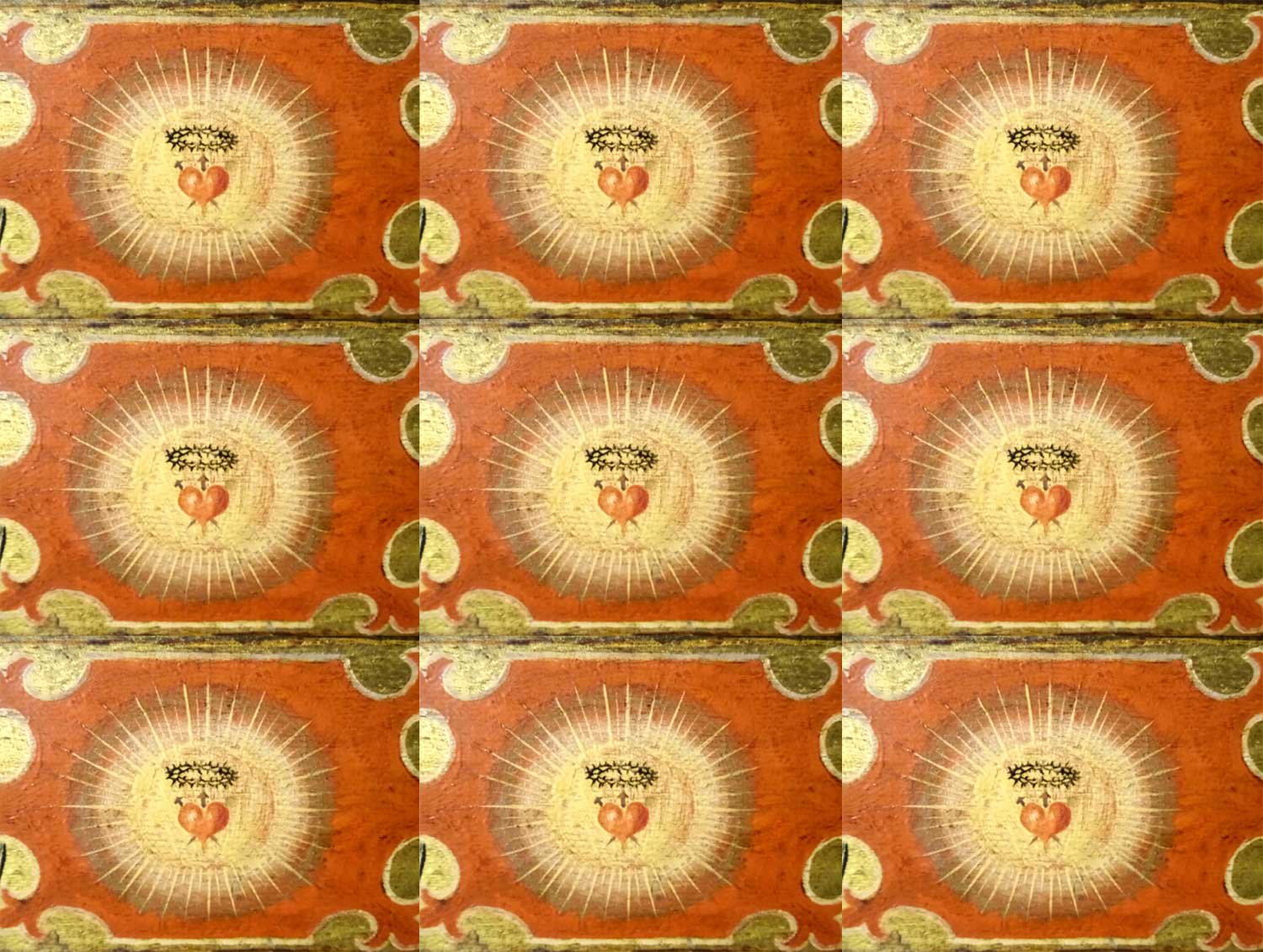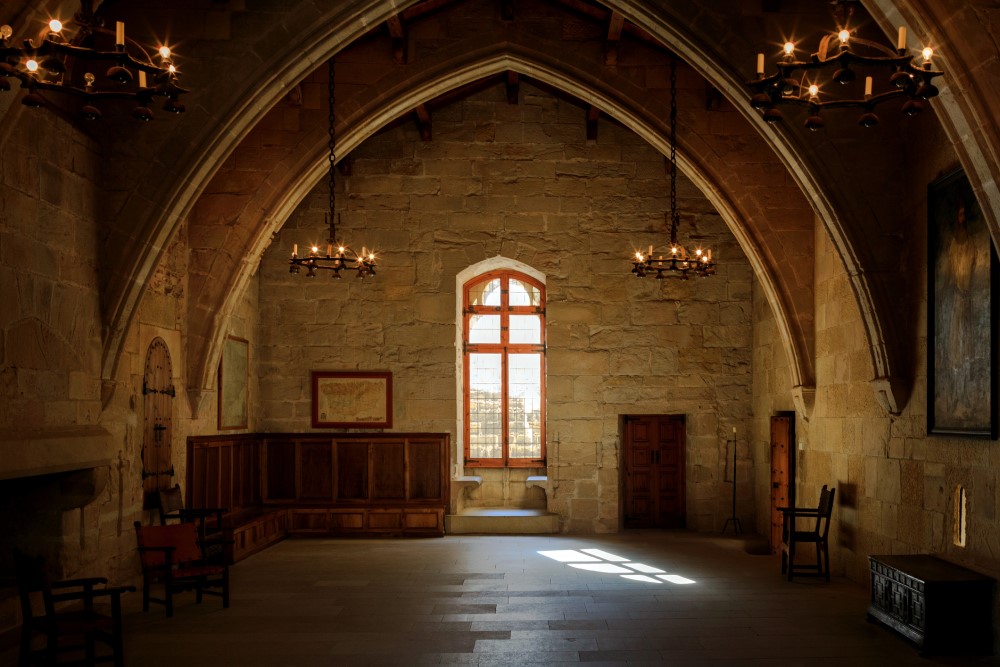Common Prayer, Common Faith
On the 450th Anniversary of the Book of Common Prayer
by Louis R. Tarsitano
It is a common error to think of the ancient and undivided Church as a monolith, as either a Christian equivalent of the Roman Empire or as simply the Roman Empire Christianized, later to be broken into pieces by schisms, reformations, nationalism, and so forth. This misunderstanding, in its fuzzy, romantic permutation, does justice neither to the Church nor to the Empire, ignoring the known facts about the complexity of both.
Furthermore, this prejudice, in its political or institutional version, obscures the actual history of the ancient Church by imposing upon it the political ideologies of the last few centuries. After all, the logic runs, what can “unity” mean except for homogeneity, conformity, and a strong central government to enforce them universally?
But “one size fits all” was not the way of the ancient Church. As basic a matter as the timing of baptisms will serve as a good demonstration of tolerated regional differences within the undivided Church. Although it is a commonplace to say that the early Church normally administered the sacrament of baptism only on Easter Even, as part of the Vigil and first service of Easter, this is not an entirely accurate description of early practice.
In northern latitudes, as in Britain, the weather at Easter was often cold enough to make mass public baptisms either unsafe or at least very uncomfortable. Thus, it became the British practice to postpone baptisms fifty days, until warmer weather and the Eve of Pentecost. The Anglo-Saxon migration of the fifth century and the seventh century agreement by the English Church to adopt the general polity and calendar of the Western Church on the Continent left this custom in place. In ecclesiastical English, the feast of Pentecost still retains the alternative Anglo-Saxon title “Whitsunday,” from the white robes of baptismal “candidates” (literally, in Latin, “those dressed in white”).
Such minor differences in local liturgical practices abounded in the undivided Church for a thousand years, without causing division. Even when division came, sometimes invoking these differences as a major or minor cause, it is interesting to note that the blocs of national and regional churches that remained in communion with one another continued to tolerate a fair amount of local diversity among themselves.
Some Necessary Definitions
To make sense of all this, we need to understand a few technical terms. There is, first of all, the common prayer—the basic order and content of the public worship of the undivided Church. The common prayer is the universal worship of the one, holy, catholic, and apostolic Church confessed in the ecumenical Creeds.
Second, there is the use or rite—the local or regional expression of the common prayer, in whatever language, along with the associated customs or ceremonial. To the casual or untutored observer, these “uses” may appear very different. Nevertheless, anyone who knows even one of the historic uses well, and understands its relation to the whole Church’s common prayer, can generally make sense of any of the other historic uses, even if it is conducted in a language unknown to him.
Last, there is the formulary—the written guide or model that maintains both the general form of the common prayer and the particular form of the local use, objectifying them for the purposes of fidelity and discipline. The formularies are the prayer books and missals that direct the priests at the altar and the congregations that they serve.
For example, in the discipline of the Eastern Church, the Liturgy of St. Basil and the Liturgy of St. John Chrysostom are not two different liturgies or common prayers. Nor are they the private prayers or work of the two named saints who are credited with compiling them. Rather, they are two uses or rites of the single common prayer of the entire Christian Church. These uses are then carefully maintained and ordered by the formularies issued under the canonical authority of the bishop in each major national jurisdiction, which provide the official text, translation (if needed), and directions for their proper administration.
The rites of the Western Church followed much the same pattern, although a special premium was placed on the conduct of the common prayer in the Latin language. Even after the Western Roman Empire had fallen apart in the fifth century, Latin remained a powerful symbol of universality in Western Europe and the token of a particular vision of culture and civilization. Within this vision, sometimes called “Romanitas,” local uses flourished until the sixteenth century. At the beginning of that century there were, in England alone, five main uses of the Latin liturgy, centered in the dioceses of Hereford, York, Lincoln, Bangor, and Salisbury.
The End of the Old Diversity
What brought this ancient diversity to an end was the appearance of a new type of diversity and of a new type of conformity. The visible communion of the Western Church broke down under the weight of ever-increasing claims by the Church of Rome to exercise universal ordinary authority. These claims in their less developed form had provoked, in large part, the Great Schism between the Eastern and Western jurisdictions of the Church in 1054. Without the ballast of communion with the Eastern Church, the Roman claims had only intensified, so that by the fourteenth century Pope Boniface VIII could write, “We declare, state, define and pronounce that it is altogether necessary to salvation for every human creature to be subject to the Roman pontiff” (the bull “Unam Sanctam,” 1302).
Subsequent attempts to enforce this declaration changed the very nature of Western Church life. Papal insistence that the legitimate theological disputation of various medieval practices and scholastic theories be routed through the sclerotic Roman bureaucracy meant, in practice, that no real settlement of disputes was possible. Calls for a unified reformation of the Western Church fell on deaf ears. So, in the event, a disunified reformation took place.
In the Reformation and the Roman Counter-Reformation of the sixteenth century, the national churches that comprised the Western Church dealt with a common set of problems (authority, doctrine, liturgy, and communion) in very different ways. The Counter-Reformation’s approach is the easier to describe. At the Council of Trent, papal authority and medieval doctrine were reaffirmed. Communion was defined as communion with the pope. And all local liturgical uses, with the exception of the Ambrosian use at Milan, the Mozarabic use at Toledo, and the uses of some religious orders, were abolished. In their place was put the “Tridentine Missal,” essentially the use of the city of Rome.
While Trent, to its great credit, also dealt with a number of important abuses, the innovating quality of the council and the new conformity it imposed objectified the tendencies against which the national churches of the Reformation had demurred. What most people still mean by “the Roman Catholic Church” refers more to the results of the Council of Trent, than it does to the life of the Western Church prior to the sixteenth century.
It cannot be stated strongly enough that the intention of the original Reformers, whatever has become of the ecclesiastical jurisdictions that look back to them, was the conservation of the pre-medieval understanding of authority, of the scriptural doctrine of the Fathers and the undivided Church, of the local use of the common prayer in a language understandable to the people of the Church, and of spiritual communion based on one baptism into the one Body of Jesus Christ. From the beginning of the Reformation, some national churches were more successful than others in pursuing this goal of conservation. And it is worth noting that the precise cause of the appalling division among today’s non-Roman Christians in the West is the abandonment in subsequent generations of the Reformers’ traditional religion, elevating “protest” and “diversity” to ends in themselves.
Nevertheless, an exhibit remains of the Reformers’ true intentions, an embodiment of the reformed Catholic faith that they struggled to recover, not out of malice toward Rome, but for a greater love of God, of the truth of Holy Scripture, and of the faith and practice of the undivided Church. It is the Book of Common Prayer of the Church of England, which has become in over 150 different languages and local editions the chief formulary of some sixty to seventy million Anglicans in national churches around the world.
Whitsunday Again
This year Anglicans everywhere celebrated the 450th anniversary of a milestone in the life of the English Church, the Ecclesia Anglicana as she had been called routinely in Latin documents through many centuries. Just as on the first day of Pentecost the people had heard the gospel preached in their own languages, on Whitsunday, June 9, 1549, the members of the Church of England heard their public worship conducted entirely in “the vulgar tongue,” in their own English language.
As of this day, an act of Parliament required in every cathedral and parish of the Church of England the exclusive use of a newly appointed formulary: The Book of the Common Prayer and Administration of the Sacraments, and Other Rites and Ceremonies of the Church, after the Use of the Church of England. This formulary was the culmination of ten years of effort, beginning with the royal injunction of 1539 that The Great Bible (in English) be set up in every parish church. Then had come an English version of the Litany in 1544, the reading of the Epistle and Gospel in English in 1547, along with the words for the administration of the Holy Communion, and in 1548 the conduct of the daily offices in certain London churches, wholly or partially in English.
One major goal of this new English order of worship was simplicity. Before the Book of Common Prayer was introduced, a library of books (the Breviary, Missal, Manual, Pontifical, and the Pie—a guidebook to using all the others) was needed to conduct the worship of the Church in each of the five main Latin uses of the Church of England. As the Preface to the English Prayer Book observed, “[M]any times there was more business to find out what should be read, than to read it when it was found out.” Now, according to the same Preface, “the whole realm shall have but one use” and in such an order that “the curates shall need no other books for their public service, but this book and the Bible.”
At the same time, the ancient sense of locality in worship was not sacrificed, in the name of simplicity, on an altar of needless conformity. The Preface also recognized the traditional discretionary authority of the diocesan bishops in the interpretation of the Prayer Book and the conduct of its services, within the boundaries of the national use. This intelligent flexibility made the single new English use fit for the use of every Christian in the realm, whether king or commoner.
But most important of all was the Prayer Book’s modesty in its claims for itself, as indicated by its title. The first words, “The Book of the Common Prayer,” bound the Church of England to the common prayer of the entire Christian Church throughout history, void of any claim of ecclesiastical exceptionalism. Aside from the change to prayer in English, no other novelty was intended. The contents were the prayer, sacraments, and administrations of “the Church,” meaning “the one, holy, catholic, and apostolic Church” as confessed by the ancient Fathers in the Creeds. Nor was there anything revolutionary about a national church’s asserting its traditional authority under the constitutions of the Church to publish a formulary for the conduct of the common prayer “after the use of the Church of England.”
Unlike the Council of Trent, which sought to impose a single liturgy on the whole world, the English Church, in the Book of Common Prayer of 1549, was scrupulous about defending the authority of other national jurisdictions to publish a use of the common prayer of their own. The following declaration appeared in the essay “Of Ceremonies: Why Some Be Abolished and Some Retained,” at the end of the English Prayer Book:
And in all these our doings we condemn no other nations, nor prescribe any thing, but to our own people only. For we think it convenient that every country should use such ceremonies, as they shall think best to the setting forth of God’s honor, and glory: and to the reducing [“leading”] of the people to a most perfect and Godly living, without error or superstition: and that they should put away other things, which from time to time they perceive to be most abused, as in men’s ordinance it often chanceth diversely in diverse countries.
Thus, the Church of England asserted the reasonable and faithful principle that whatever is man-made in the use of a national church must serve what is God-given in the common prayer of Christ’s One Church, or be amended to do so for the sake of the glory of God and the welfare of his people. Furthermore, the English Reformers took the position that authority resides in Christ and in his whole Church, and not in any one jurisdiction, however honorable or ancient, to be administered, except in the case of a General Council, by the pastors and chief pastors with the immediate cure of souls. No better “picture” can be had of the conservative and pastoral “face” of the Reformation than the Book of Common Prayer.
A Lasting Importance
Beyond any ecclesiastical importance, the Book of Common Prayer has made a lasting contribution to the life of every speaker of modern English. During the period when our modern idiom was developing, the schools taught mainly the grammar and prose styles of Latin and Greek, and not those of English. For this reason, many of the English prose writers of the sixteenth and seventeenth centuries attempted to conform the English language to classical models, with often impenetrable results. A glance at John Milton’s essay “Areopagitica” will give a sense of what English prose might have permanently become.
In contrast, Archbishop Thomas Cranmer, the chief compiler of the Prayer Book, as well as the early translators of the English Bible (such as William Tyndale and Miles Coverdale) broke the classical rules to produce a more natural English idiom. It is to men such as these, as well as to William Shakespeare, who also wrote good English for the common people, to whom we owe the potential for clarity and beauty in modern English, not to mention the vast fund of memorable phrases that still enliven the educated mind that thinks in English.
And yet, the Prayer Book is more than an English cultural icon. There are few religious handbooks that possess anything like its power to guide a godly Christian life, from cradle to grave, 365 days a year, with less fuss or self-consciousness. It is as much an order for the Christian home as it is for the cathedral, parish, or monastery. Indeed, if anything holds out any promise for the healing of the malaise afflicting most of the western, industrialized jurisdictions of the Anglican Communion today, it is a return to the faith and practice objectified by the Book of Common Prayer as a formulary that unites the entire Communion and all of its members with the grace of God and the discipline of the ancient Church.
So, too, those of us who are Anglicans might look with our Roman Catholic and Orthodox brethren to the Book of Common Prayer, rather than to the earthly politics of the sixteenth or some other century, for those ancient and common things that we have always shared, and might share more visibly once again. A similar comparison of the Prayer Book with the older English liturgies of Protestant, Reformed, and Evangelical churches might reveal more common ground and more common history than the contemporary scene of denominations, revisions, and the complete abandonment of liturgy now permits us to see.
This year’s Whitsunday, then, marked more than the anniversary of a Prayer Book produced in England in 1549. It presented an opportunity for Anglicans to reclaim their soul, by rediscovering their ancestors’ modesty in thinking of themselves as only one jurisdiction within the Body of Christ, bound by charity and grace to a single common life and a single common worship with every other faithful Christian. It also gave occasion for the whole of Christ’s Church to ponder the questions of what is universal, what is merely local, and whether we have sometimes confused the two at the cost of lost fellowship and a blunted witness to Christ Jesus our common Lord.
|
A Collect for Peace (from Morning Prayer) O God, who art the author of peace and lover of concord, in knowledge of whom standeth our eternal life, whose service is perfect freedom; Defend us thy humble servants in all assaults of our enemies; that we, surely trusting in thy defence, may not fear the power of any adversaries, through the might of Jesus Christ our Lord. Amen. A Collect for Grace (from Morning Prayer) O Lord, our heavenly Father, Almighty and everlasting God, who hast safely brought us to the beginning of this day; Defend us in the same with thy mighty power; and grant that this day we fall into no sin, neither run into any kind of danger; but that all our doings, being ordered by thy governance, may be righteous in thy sight; through Jesus Christ our Lord. Amen. A Collect for Peace (from Evening Prayer) O God, from whom all holy desires, all good counsels, and all just works do proceed; Give unto thy servants that peace which the world cannot give; that our hearts may be set to obey thy commandments, and also that by thee, we, being defended from the fear of our enemies, may pass our time in rest and quietness; through the merits of Jesus Christ our Saviour. Amen. A Collect for Aid against Perils Lighten our darkness, we beseech thee, O Lord; and by thy great mercy defend us from all perils and dangers of this night; for the love of thy only Son, our Saviour, Jesus Christ. Amen. |
| Prayer (from the Litany) O God, merciful Father, who despisest not the sighing of a contrite heart, nor the desire of such as are sorrowful; Mercifully assist our prayers which we make before thee in all our troubles and adversities, whensoever they oppress us; and graciously hear us, that those evils which the craft and subtilty of the devil or man worketh against us, may, by thy good providence, be brought to nought; that we thy servants, being hurt by no persecutions, may evermore give thanks unto thee in thy holy Church; through Jesus Christ our Lord. Amen. Prayer (from the Litany) We humbly beseech thee, O Father, mercifully to look upon our infirmities; and, for the glory of thy Name, turn from us all those evils that we most justly have deserved; and grant, that in all our troubles we may put our whole trust and confidence in thy mercy, and evermore serve thee in holiness and pureness of living, to thy honour and glory; through our only Mediator and Advocate, Jesus Christ our Lord. Amen. The Collect for Quinquagesima O Lord, who hast taught us that all our doings without charity are nothing worth; Send thy Holy Ghost, and pour into our hearts that most excellent gift of charity, the very bond of peace and of all virtues without which whosoever liveth is counted dead before thee. Grant this for thine only Son Jesus Christ’s sake. Amen. |
Louis R. Tarsitano (d. 2005), a former associate editor of Touchstone, was a priest of the Anglican Church in America and rector of St. Andrew?s Church in Savannah, Georgia. He also was the co-author, with Peter Toon, of Neither Archaic Nor Obsolete: The Language of Common Prayer & Public Worship (Brynmill Press, Ltd., 2003).
subscription options
Order
Print/Online Subscription

Get six issues (one year) of Touchstone PLUS full online access including pdf downloads for only $39.95. That's only $3.34 per month!
Order
Online Only
Subscription

Get a one-year full-access subscription to the Touchstone online archives for only $19.95. That's only $1.66 per month!
bulk subscriptions
Order Touchstone subscriptions in bulk and save $10 per sub! Each subscription includes 6 issues of Touchstone plus full online access to touchstonemag.com—including archives, videos, and pdf downloads of recent issues for only $29.95 each! Great for churches or study groups.
Transactions will be processed on a secure server.
more from the online archives
calling all readers
Please Donate
"There are magazines worth reading but few worth saving . . . Touchstone is just such a magazine."
—Alice von Hildebrand
"Here we do not concede one square millimeter of territory to falsehood, folly, contemporary sentimentality, or fashion. We speak the truth, and let God be our judge. . . . Touchstone is the one committedly Christian conservative journal."
—Anthony Esolen, Touchstone senior editor









